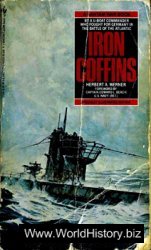Although the failure of the 1911 revolution was a clear
sign that China was not yet ready for radical change,
discontent with existing conditions continued to rise in
various sectors of Chinese society. The most vocal protests
came from radical intellectuals who opposed Yuan
Shikai’s conservative rule but were now convinced that
political change could not take place until the Chinese
people were more familiar with trends in the outside
world. Braving the displeasure of Yuan Shikai and his successors,
progressive intellectuals at Beijing University
launched the New Culture Movement, aimed at abolishing
the remnants of the old system and introducing Western
values and institutions into China. Using the classrooms
of China’s most prestigious university as well as the
pages of newly established progressive magazines and
newspapers, they presented the Chinese people with a
bewildering mix of new ideas, from the philosophy of
Friedrich Nietzsche and Bertrand Russell to the educational
views of the American John Dewey and the feminist
plays of Henrik Ibsen. As such ideas flooded into
China, they stirred up a new generation of educated Chinese
youth, who chanted “Down with Confucius and
sons” and talked of a new era dominated by “Mr. Sai”
(Mr. Science) and “Mr. De” (Mr. Democracy). No one
was a greater defender of free thought and speech than
the chancellor of Beijing University, Cai Yuanpei:
So far as theoretical ideas are concerned, I follow the principles
of “freedom of thought” and an attitude of broad tolerance
in accordance with the practice of universities the
world over. . . . Regardless of what school of thought a person
may adhere to, so long as that person’s ideas are justified
and conform to reason and have not been passed by through
the process of natural selection, although there may be controversy,
such ideas have a right to be presented.2
The problem was that appeals for American-style democracy
and women’s liberation had little relevance to
Chinese peasants, most of whom were still illiterate and
concerned above all with survival. Consequently, the
New Culture Movement did not win widespread support
outside the urban areas. It certainly earned the distrust of
conservative military officers, one of whom threatened to
lob artillery shells into Beijing University to destroy the
poisonous new ideas and their advocates.
Discontent among intellectuals, however, was soon
joined by the rising chorus of public protest against Japan’s
efforts to expand its influence on the mainland. During
the first decade of the twentieth century, Japan had taken
advantage of the Qing’s decline to extend its domination
over Manchuria and Korea (see Chapter 3). In 1915, the
Japanese government insisted that Yuan Shikai accept a
series of twenty-one demands thatwould have given Japan
a virtual protectorate over the Chinese government and
economy. Yuan was able to fend off the most far-reaching
Japanese demands by arousing popular outrage in China,
but at the Paris Peace Conference four years later, Japan
received Germany’s sphere of influence in Shandong
Province as a reward for its support of the Allied cause in
WorldWar I. On hearing the news that the Chinese government
had accepted the decision, on May 4, 1919, patriotic
students, supported by other sectors of the urban
population, demonstrated in Beijing and other major
cities of the country. Although this May Fourth Movement
did not result in a reversal of the decision to award
Shandong to Japan, it did alert a substantial part of the politically
literate population to the threat to national survival
and the incompetence of the warlord government.
By 1920, central authority had almost ceased to exist
in China. Two political forces now began to emerge as
competitors for the right to bring order to the chaos of the
early republican era. One was Sun Yat-sen’s Nationalist
Party. Driven from the political arena seven years earlier
by Yuan Shikai, the party now reestablished itself on the
mainland by making an alliance with the warlord ruler of
Guangdong Province in South China. From Canton, Sun
sought international assistance to carry out his national
revolution. The other was the Chinese Communist Party.
Following Lenin’s strategy, the CCP sought to link up
with the more experienced Nationalists. Sun Yat-sen
needed the expertise and the diplomatic support that the
Soviet Union could provide because his anti-imperialist
rhetoric had alienated many Western powers. In 1923,
the two parties formed an alliance to oppose the warlords
and drive the imperialist powers out of China.
For three years, with the assistance of a Comintern
mission in Canton, the two parties submerged their mutual
suspicions and mobilized and trained a revolutionary
army to march north and seize control over China. The
so-called Northern Expedition began in the summer of
1926 (see Map 5.1). By the following spring, revolutionary
forces were in control of all Chinese territory south of
the Yangtze River, including the major river ports of
Wuhan and Shanghai. But tensions between the two parties
now surfaced. Sun Yat-sen had died of cancer in 1925
and was succeeded as head of the Nationalist Party by his
military subordinate, Chiang Kai-shek. Chiang feigned
support for the alliance with the Communists but actually
planned to destroy them. In April 1927, he struck
against the Communists and their supporters in Shanghai,
killing thousands. The CCP responded by encouraging
revolts in central China and Canton, but the uprisings
were defeated and their leaders were killed or forced
into hiding.




 World History
World History









